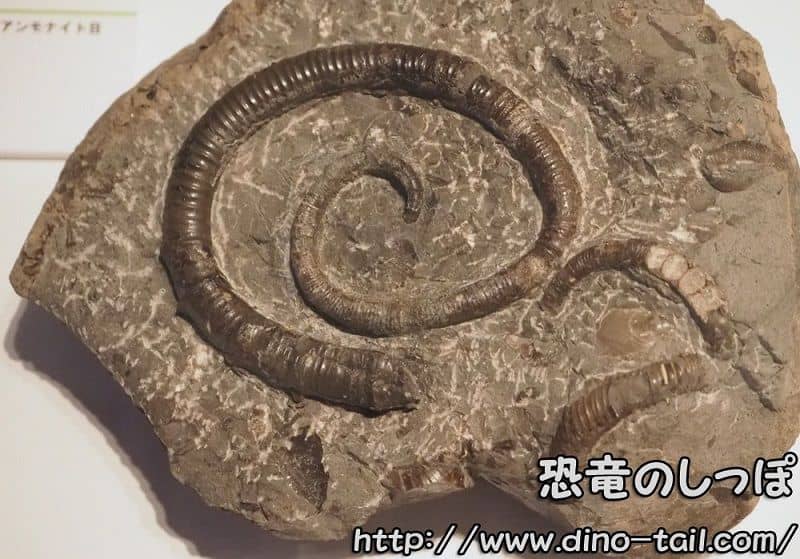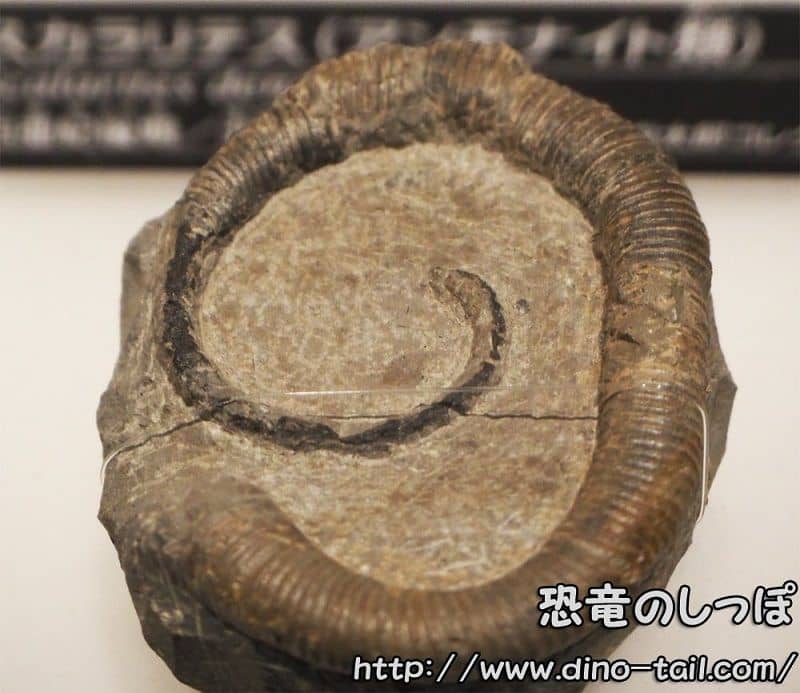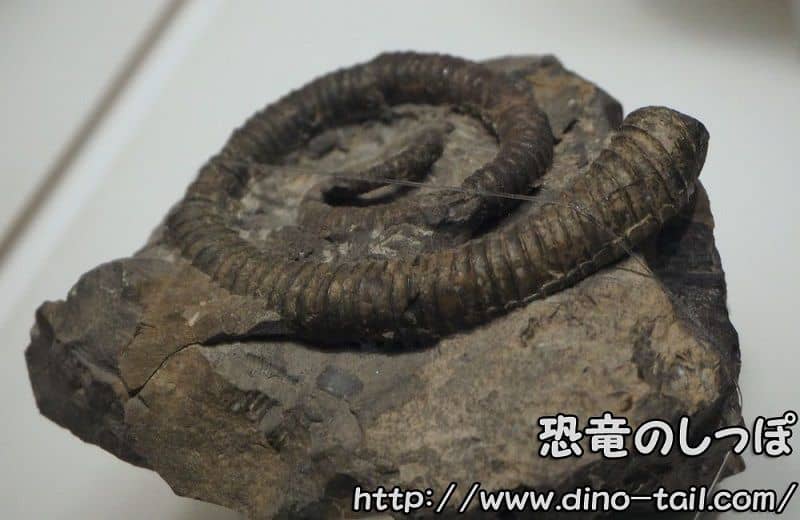About Scalarites (Ammonite)
| Scientific Name (Genus) | Scalarites |
| Meaning of Name |
Ladder-like stone
scalaris (ladder-like) [Latin] + -ites (stone) [suffix] |
| Classification | Ammonoidea, Ammonitida, Diplomoceratidae |
| Period | Late Cretaceous (approx. 89 - 70.6 million years ago) |
| Sub-classification / Species Name |
Scalarites scalaris
Scalarites cingulatum Scalarites mihoensis |
| Year of Paper Publication | 1954 |
Features: The Mystery of Heteromorph Ammonites
Scalarites is a member of a group called " heteromorph ammonites " that flourished in seas worldwide during the Late Cretaceous (about 89 million to 70.6 million years ago). While ammonites are generally known for their flatly coiled shells, many strangely shaped ammonites that appear "uncoiled," like Scalarites, emerged during the Cretaceous.
A Leisurely Ammonite?

From Hokkaido
Loosely coiled shells like that of Scalarites created significant water resistance and were not at all suited for fast swimming. From this, it is thought that they were not active predators that swam around the seabed, but rather ambush predators that drifted slowly in the water like plankton.
Computer simulations suggest that they floated stably in the water with their shells oriented vertically. They would then spread their tentacles and prey on small crustaceans and other plankton that passed nearby.
Heteromorphy: A Sign of "Great Success"

From Obira, Hokkaido
This strange shape was not a failure, but a sign of success in carving out a different niche from other ammonites in the highly competitive Cretaceous seas. In fact, Scalarites has been discovered all over the world, including Hokkaido, Japan, Russia, and the United States, indicating that it was very prosperous at the time.
Scalarites Stamp and Fossil Gallery


